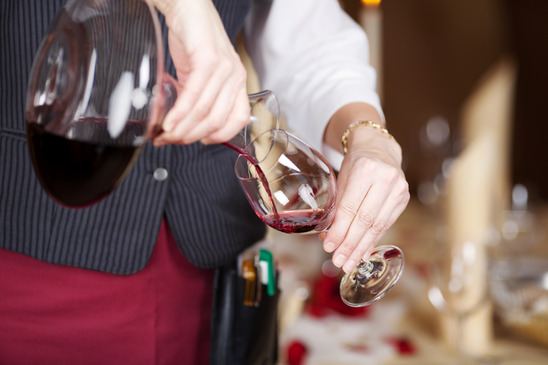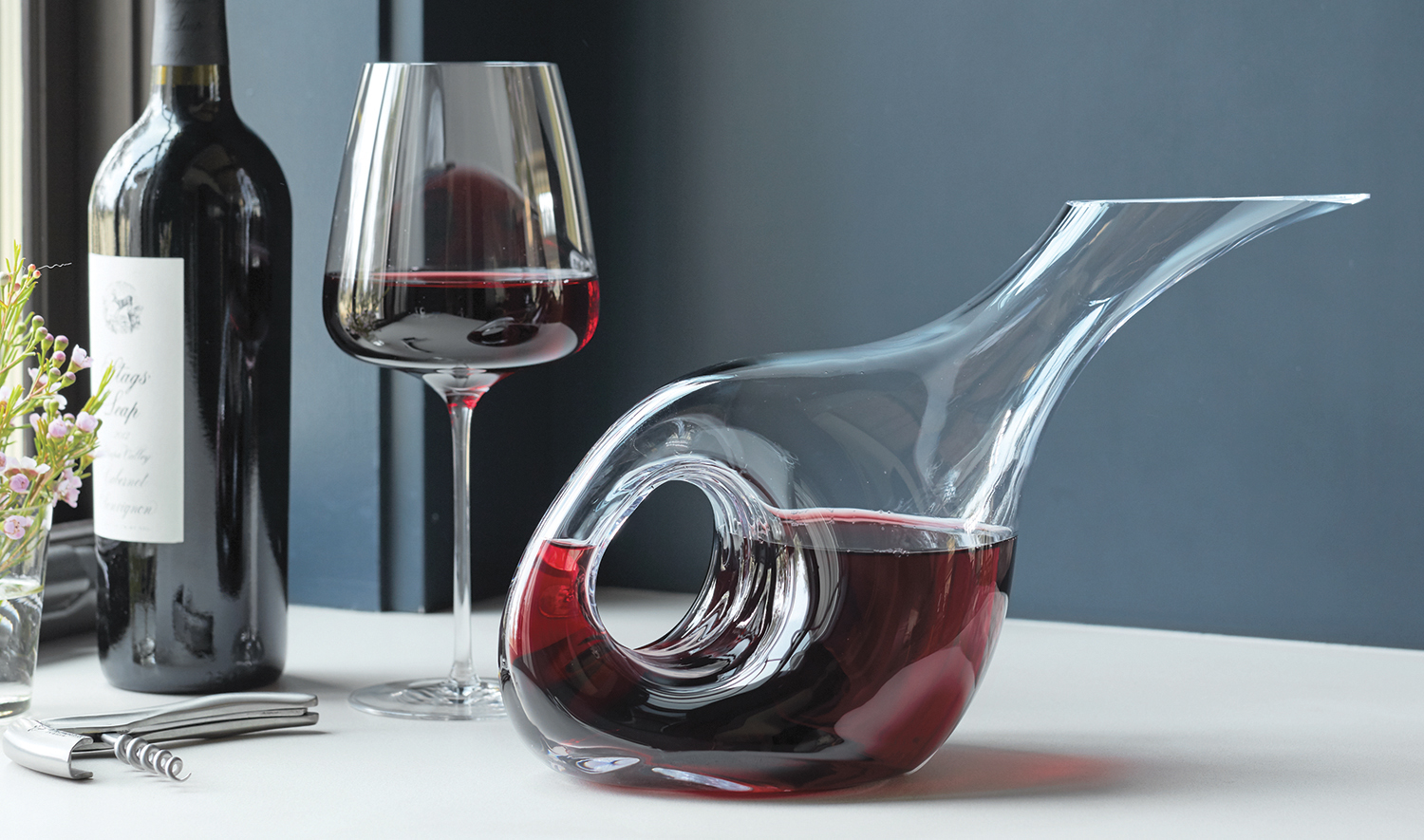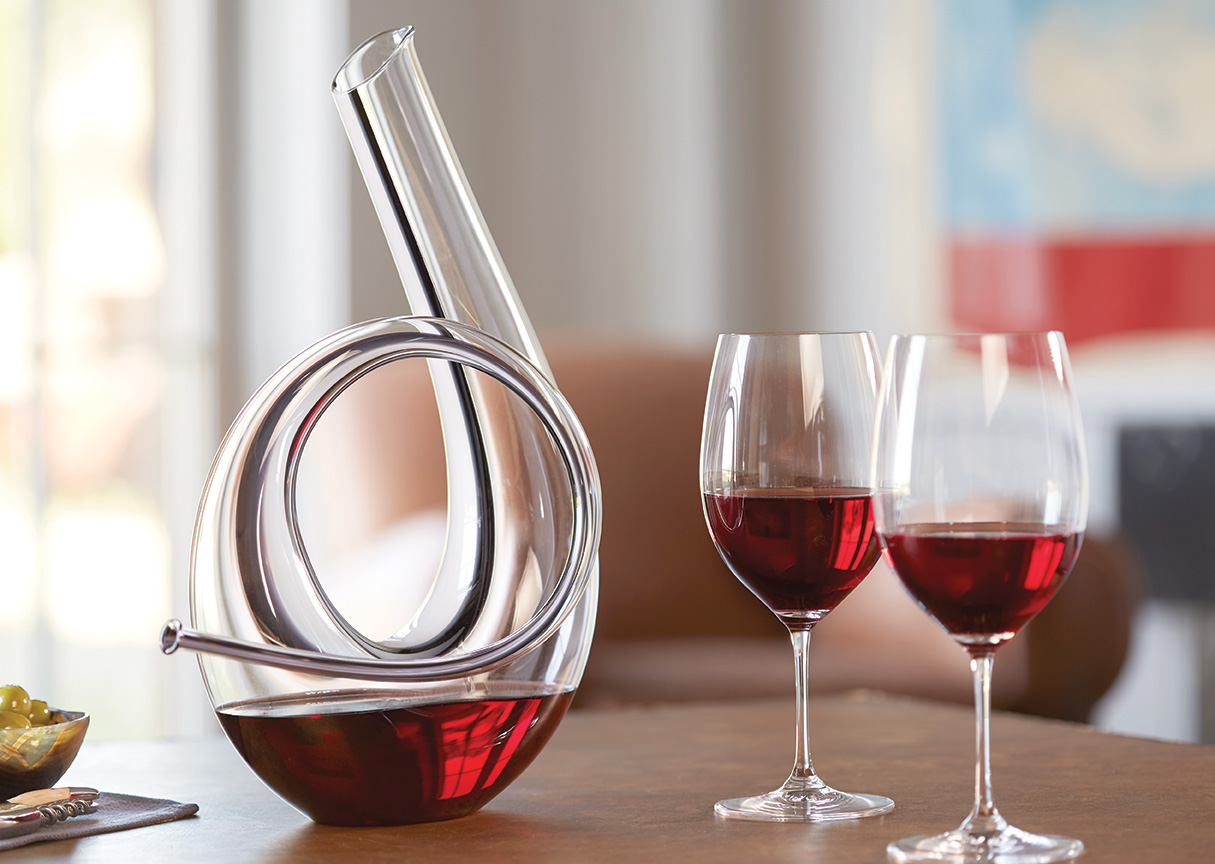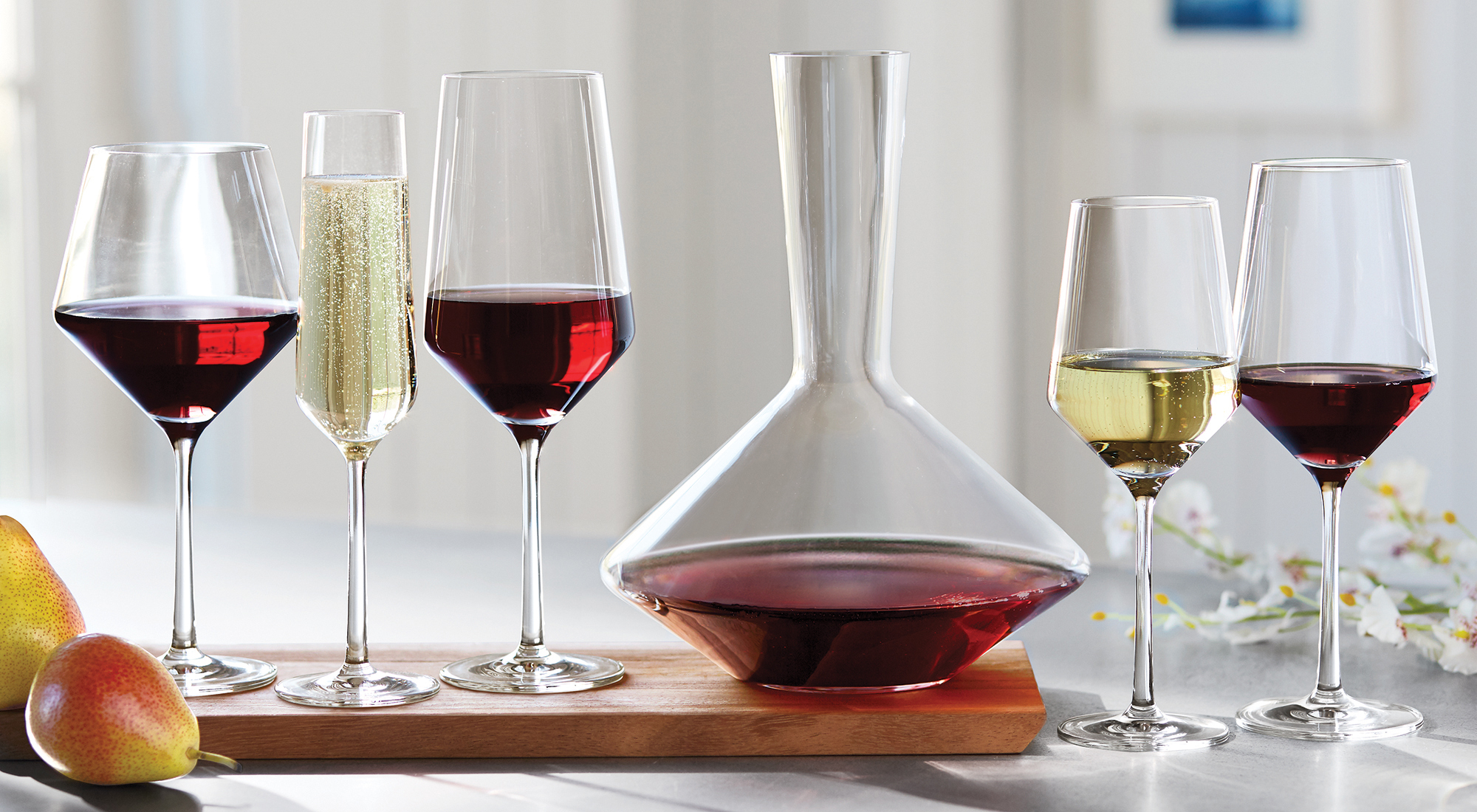
To untrained wine drinkers, a decanter might seem like a decorative item or conversation piece strategically placed to liven up the bar. But this tool does a great deal to enhance your wine’s taste.
Decanters have two main purposes: to aerate wine and remove sediment. Aerating the wine helps balance the sugar, alcohol and acidity to soften the tannins and improve the flavor of the wine. By letting the wine breathe, decanters unveil a whole new level of flavor for old and new favorites alike.
This process can also be useful to improve the wine’s flavor profile, and a decanter displays the wine’s color and clarity elegantly.
Proper decanting does make a difference. But aerating wine isn’t as simple as pouring it into the decanter, then immediately transferring it into your glass. When decanting your next bottle of wine, follow these eight tips.
Schott Zwiesel Tritan Pure Decanter
1. Give younger wines the royal treatment
As wine sits in the bottle for long period of time, the small amount of oxygen in the bottle slowly aerates it. Younger wines have less time to aerate, so decanting a younger wine expedites the process by exposing it to oxygen and helps to enhance its flavors. The process of aeration separates the flavors and exposes the nuances of the wine that you may not have noticed otherwise.
2. Pick a clear decanter to ensure you pour the best glass
Decanters come in many different shapes and sizes, but they all serve the same purpose. When shopping for a decanter, opt for one that’s clear and without decorations. The clarity will help you to see if there are any sediment particles in the wine.
3. Start your wine off at the right temperature
Wines blossom quicker at cooler temperatures, rather than warmer ones. Cooler temperatures actually speed up the decanting process because it allows more oxygen to enter the wine. For the best flavor, it’s important to bring your wine to the right temperature before you start the decanting process.
Generally, a good temperature to keep red wine is between 52-65°F. Whites are typically stored at 45-50°F.

4. Let the bottle stand upright for 24 hours before decanting
Sediment, also known as cream of tartar, is formed during a wine’s fermentation process. It’s made of yeast, grape seeds and other organic materials, which can lead to an unpleasant and bitter taste.
Older wines are likely to have more sediment than newer wines. Sediment will collect at the bottom if you let the bottle rest standing up for at least 24 hours first. When decanting the wine, try pouring with a candle or a flashlight behind the bottle to watch for sediment as you pour.
Then, slowly pour the wine into the decanter, and leave the sediment behind in the wine bottle.
Alternatively, slowly pour your wine through a funnel and screen. Flat screens are best for low amounts of sediment, and domed screens will catch high amounts of sediment. The screen will filter out the unwanted sediment from the decanter.
5. Be careful of over-aerating wine, especially older bottles
The flavor of older wines can actually fade from over-exposure to air. Older wines are more oxidized than younger wines. This means they have an easier time expressing their aromas and flavors and don’t require as much aeration time as younger wines.
You can always decant wine more, but you can never decant it less. When a wine is over-decanted, it is not possible to bring it back to life. To avoid over-aeration, taste the wine regularly as it’s in the process of extended decanting.
6. Discover the right decanting time through experimentation
The more experienced you become with the wine, the clearer the time frame of the decanting process will be. For younger, tannic wines, the decantation time can range anywhere from two to three hours. Fortified wines can benefit from 12 or more hours. Older wines tend to lose their aromatic properties if decanted for longer than an hour.
Try experimenting with different times and methods, and taste it regularly during the decanting process to isolate the most enjoyable flavor. You might want to record the time frames you try so you can refer back to them later. Of course, there is no “right answer” when it comes to the question of how long to decant wine because the time you spend comes down to your own personal preference.
7. Experiment with decanting more than just red wines
Though aeration is most common in red wines, younger white whites can also benefit from using wine decanters. It can actually smooth out younger white wines by softening the tannins. Give it a try!

8. If you don’t have a decanter, swirl your glass to aerate wine
If you pour a glass of overly tannic wine and you don’t have a decanter, swirl the wine in your glass to aerate it. This method will increase the surface area of the wine and expose it to oxygen, just as a decanter does.
But pouring that perfect glass of wine requires more than the right stemware. A decanter’s wider surface area exposes the wine to more oxygen, which develops the wine more thoroughly and brings it to life.
Swirling your glass can be a quick fix to aerate your wine, but a decanter does the job more effectively. If you (or your host) don’t have one, check out this selection from our catalog:
Following one of more of these useful decanting techniques can take your wine tasting experience to a whole new level. There is no right way or wrong way to decant your wine, as long as you end up with a glass that you enjoy.
After all, drinking fine wine is all about the experience.
About the author: Jenni Tolman is a professional content manager and wine lover. If you’d like to reach her, send an email to [email protected].

Most of these types are made from plastic with the exception of the Soiree wine aerator. The Soiree has a unique dimple design which creates a series of lumps through the aerator. This ensures that the wine is exposed to as much air as possible through the aeration process. The Soiree is probably the best device in the category for on the bottle aerators for this very reason. Your wine is fully aerated rather than partially.
– Wine Aerator
The Vinturi wine aerator is one of the best on the market today. They have a great way of bringing out the best of aromas a wine has to offer. If you are looking for an aerator that will give you satisfaction you deserve, you have made the right decision in going with Vinturi.
– decantus wine aerator